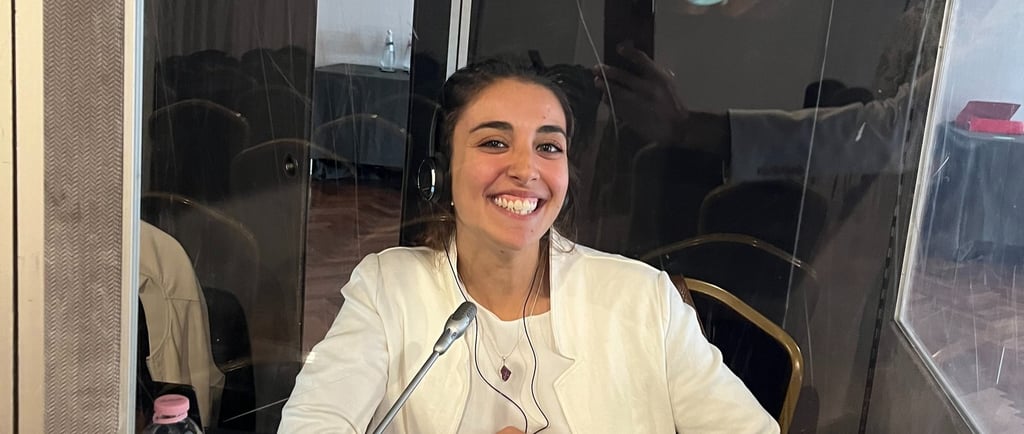
Beyond Words: The Human Side of Interpreting in Multicultural Settings
Article
Flaminia Munafò
6/17/20253 min leer



In our interconnected world, language services are essential — but interpreting goes far beyond converting words from one language to another. In multicultural settings, real understanding requires emotional intelligence, cultural sensitivity, and fast, human decision-making.
As a professional interpreter, I’ve seen firsthand that the most powerful moments of communication often happen between the lines — in a look, a pause, or a choice of tone.
In this article, I’ll share a look inside the human side of interpreting: the challenges, the soft skills, and the unseen work it takes to build bridges across cultures.
1. Interpreting is never just about words
To most people, interpreting looks like “saying the same thing in another language.” But words alone rarely carry the full meaning of a message.
In real-time interpreting, you're constantly reading between the lines: tone of voice, cultural nuance, emotional subtext. A joke may fall flat in another language. A direct question might need softening. An untranslatable phrase may need creative handling on the spot.
Being an interpreter means being fully present — and flexible enough to make hundreds of micro-decisions per minute.
2. A real-life moment: the silent pause
In a humanitarian setting a few years ago, I was interpreting for a delegate during a tense meeting. At one point, the speaker paused. Completely silent — no words, just a long breath and a look across the room.
Everyone waited. It was clear something meaningful had been said — without saying anything.
In moments like that, the work of the interpreter isn’t about filling the silence. It’s about respecting it, sensing its weight, and knowing that communication isn't only verbal. That instinct doesn’t come from a textbook — it comes from human experience.
3. Cultural intelligence is a must-have skill
Being fluent isn’t enough. Interpreting between cultures requires cultural intelligence — the ability to recognize unwritten rules, adapt communication styles, and anticipate what might be lost (or misread) across cultural lines.
What sounds assertive in one culture may come across as rude in another. What seems neutral in one language might carry emotional weight in another.
Interpreters need to navigate all of that, in real time, while keeping the message clear and intact.
4. Emotional tone is just as important as accuracy
Every message has two parts: the content, and the tone. And tone is everything.
An interpreter must render not just what is said, but how it’s said. A factual sentence can be urgent, ironic, hopeful, or skeptical — and that emotional layer matters.
Too flat, and you risk disconnecting the audience. Too intense, and you might distort the speaker’s intent.
It takes active listening and emotional calibration — often in milliseconds — to strike the right balance.
5. Interpreting under pressure
Many interpreting assignments take place in high-pressure environments: international negotiations, medical consultations, legal proceedings.
You don’t always have time to reflect — decisions must be made in the moment.
That’s where training, focus, and inner stability come in. Like yoga (a practice I love), interpreting is about presence, balance, and staying grounded, even when the context gets intense.
Conclusion: It’s a deeply human profession
In the age of AI and instant translation tools, human interpreters remain essential — not just for accuracy, but for empathy, adaptability, and understanding.
We interpret with our minds, but also with our hearts.
Because real communication doesn’t happen between languages — it happens between people.
This is how I approach interpreting: not just as a skill, but as a human connection.
Behind every word is a person, a culture, a story. And behind every good interpretation is someone listening closely — to what’s said, and what isn’t.
If you work in languages, or are just starting out, know that your work matters.
And if you ever want to talk about language, connection, or how interpreting can change lives — I’d love to hear from you.


